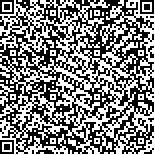| 摘要: |
| [摘要] 目的 分析中医辨证理念下中老年女性失眠症患者的临床特征。方法 以2016年3月1日至2020年1月31日在上海市第七人民医院门诊收治的144例45~75岁的中老年女性失眠患者为研究对象,对其年龄、失眠相关症状、病位、病性及辨证分型等指标进行分析。结果 144例患者平均年龄为(59.43±7.96)岁,45~59岁患者69例(47.92%),60~75岁75例(52.08%)。中老年女性失眠特征表现为寐浅易醒(55.56%)、入寐困难(53.47%)和寐而早醒(20.83%)。伴随症状主要是胃脘不适(59.03%)、头晕乏力(53.47%)和胸闷心烦(52.08%)。失眠的病位主要在脾(60.42%)、心(50.00%)和肝(43.75%);病性主要为气虚(42.36%)、气滞(31.25%)和痰湿(20.83%)。在失眠辨证分型主要为心肝火旺证(28.47%)、心脾两虚证(18.75%)、痰湿阻络证(11.81%)。统计分析结果显示,症状为头晕乏力、病位在心、病性为痰湿以及证型为心脾两虚、痰湿阻络的失眠临床特征与中老年女性失眠患者的年龄具有关联性(P<0.05)。结论 中老年女性失眠症与生理机能下降及脏腑虚损有关,早干预、早诊治有利于防治老年性顽固性失眠症。 |
| 关键词: 中老年女性 失眠 中医辨证 临床特征分析 |
| DOI:10.3969/j.issn.1674-3806.2022.05.04 |
| 分类号:R 256.23 |
| 基金项目:上海市浦东新区名中医培养计划项目(编号:PWRzm2020-08) |
|
| Analysis of clinical characteristics of 144 middle-aged and elderly female patients with insomnia under the concept of Traditional Chinese Medicine syndrome differentiation |
|
SHEN Ding-yi, LI Xiao-pan, MENG Fan-ping, et al.
|
|
Shanghai University of Traditional Chinese Medicine, Shanghai 201203, China
|
| Abstract: |
| [Abstract] Objective To analyze the clinical characteristics of middle-aged and elderly female patients with insomnia under the concept of Traditional Chinese Medicine(TCM) syndrome differentiation. Methods A total of 144 middle-aged and elderly female patients with insomnia aged 45-75 years who were admitted to the outpatient department of Shanghai Seventh People′s Hospital from March 1, 2016 to January 31, 2020 were selected as the research subjects. The indexes of age, insomnia related symptoms, location and nature of diseases and syndrome differentiation were analyzed. Results In the 144 patients, the average age was (59.43±7.96) years, including 69 patients(47.92%) aged 45-59 years and 75 patients(52.08%) aged 60-75 years. The characteristics of insomnia in the middle-aged and elderly women were easy to wake up(55.56%), difficult to sleep(53.47%) and early to wake up(20.83%); the main accompanying symptoms were epigastric discomfort(59.03%), dizziness and fatigue(53.47%) and chest tightness and upset(52.08%). The main disease locations of insomnia were spleen(60.42%), heart(50.00%) and liver(43.75%). The main disease natures were Qi deficiency(42.36%), Qi stagnation(31.25%) and phlegm dampness(20.83%). The syndrome differentiations of insomnia mainly included the syndrome of heart and liver fire excess(28.47%), the syndrome of heart and spleen deficiency(18.75%), and the syndrome of phlegm dampness blocking collaterals(11.81%). The results of statistical analysis showed that the clinical characteristics of insomnia with symptoms of dizziness and fatigue, disease location of heart, disease nature of phlegm dampness, and syndrome type of deficiency of both heart and spleen, phlegm dampness blocking collaterals were associated with the age of the middle-aged and elderly female insomnia patients(P<0.05). Conclusion Insomnia in middle-aged and elderly women is related to the decline of physiological function and the deficiency of Zang Fu organs. Early intervention and early diagnosis and treatment are conducive to the prevention and treatment of senile intractable insomnia. |
| Key words: Middle-aged and elderly women Insomnia Traditional Chinese Medicine(TCM) syndrome differentiation Analysis of clinical characteristics |

